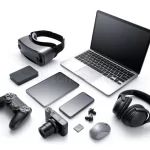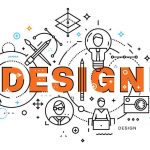Welcome to the future of education, where traditional classrooms are being transformed by innovative technologies and new teaching methods. In this blog post, we will explore the exciting trends that are reshaping the way students learn and educators teach. From virtual reality to personalized learning, join us on a journey into a world where creativity meets technology, collaboration knows no boundaries, and knowledge is just a click away. Get ready to be inspired as we uncover the cutting-edge innovations revolutionizing the classroom and paving the way for an extraordinary educational experience like never before. The future is here – let’s dive in!
What is the Future of Education?
In the 21st century, there is no doubt that education will continue to evolve. Here are some of the most important innovations and trends shaping the classroom:
1. Virtual learning environments:
One of the most important trends in education is virtual learning environments (VLEs). These platforms allow students to learn from anywhere in the world, using a variety of tools and technologies. VLEs have already revolutionized how students learn at home, and they are now also being used in schools. They offer a number of benefits, such as allowing students to access information from anywhere in the world, helping them to retain information better, and making it easier for teachers to monitor student progress.
2. Augmented reality:
Another trend that is impacting education is augmented reality (AR). AR is a technology that allows users to see digital images or objects overlaid on their real-world environment. This means that instead of looking at static images or videos, students can experience them firsthand by interacting with them directly. AR has many potential applications in the classroom, such as teaching children about science and mathematics through experiential exercises, training professionals in new skills, and providing educational materials for users with special needs.
3. Robotics:
One of the key areas where robotics are having an impact on education is in Pearson’s Field Guide to Robotics Literacy Education which recommends integrating robotics into curricula across grades K-12 as part of hands-on problem solving
Trends and Innovations Shaping the Classroom
One trend that is shaping the classroom is the increasing use of technology. Technology has become an important part of education, and it can be used in a variety of ways to help students learn. For example, some schools are using technology to help students learn how to use computers. Other schools are using technology to help students learn how to study for exams. In addition, some schools are using technology to help teachers teach their classes. Technology can also be used to help students learn about other cultures. For example, one school is using technology to allow students to learn about Chinese culture. Another school is using technology to allow students to learn about Japanese culture.
Examples of Trends and Innovations Shaping Education
1. The use of technology in the classroom is becoming increasingly popular, as it allows educators to provide more interactive and engaging learning opportunities for their students.
2. Augmented reality (AR) technology is being used to create new ways for students to learn, by immersing them in digital worlds that they can explore.
3. Schools are also experimenting with online courses, which allow students to receive instruction from a variety of different instructors around the world.
4. More schools are recognizing the importance of providing educational opportunities for students who are marginalized or who have disabilities, by developing programs that cater to their specific needs.
5. Educators are exploring ways to integrate mindfulness and meditation into their classrooms, in order to promote relaxation and focus in the students’ lives outside of school hours as well.
Conclusion
As we move into the future, it is clear that education will continue to be shaped by innovations and trends. One important trend is the rise of hands-on learning, which continues to be popular among students and educators alike. In addition, virtual and augmented reality are becoming more prevalent in classrooms as they offer new ways for students to learn. With so many changes occurring in the classroom, it is important for teachers to stay up-to-date on the latest trends so that they can create a learning environment that meets the needs of their students.



























